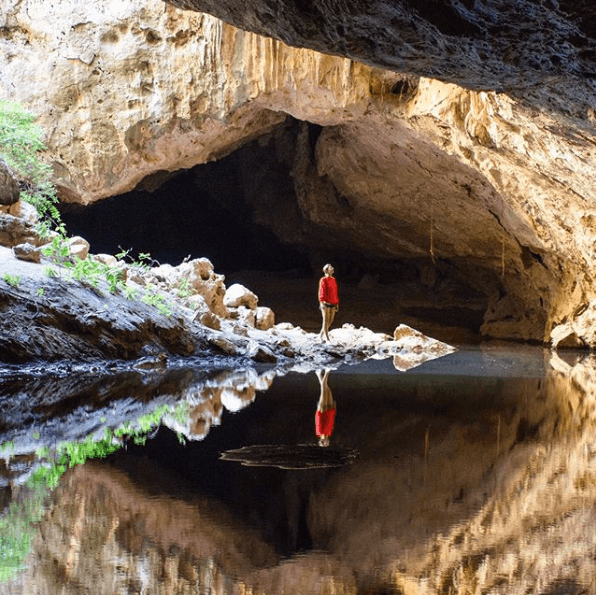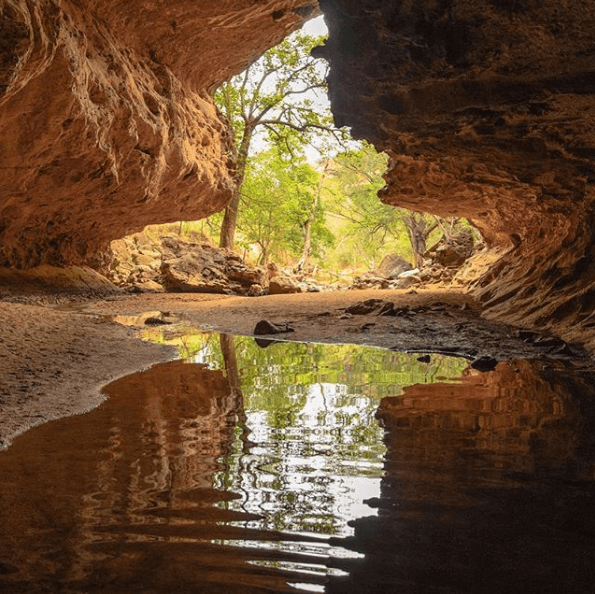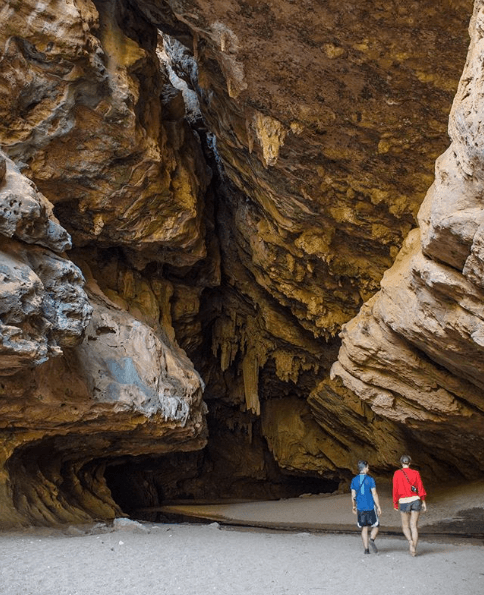Dimalurru (Tunnel Creek) National Park: Everything you need to know

Walk, and wade, through a tunnel beneath an ancient mountain range that was carved out by water over millions of years and was once home to an Aboriginal (Bunuba) freedom fighter.
If it isn’t already, the impressive Dimalurru (Tunnel Creek) should be high on your Kimberley bucket list!
What is it?
A 750m long tunnel beneath a mountain range which is also WA’s oldest cave system. Carved out by Tunnel Creek and home to stalactites, bats, and the occasional freshwater crocodile, the walk takes you from one side of the Napier Range to the other alongside, and through, pools of fresh water. The Napier Range is the limestone remains of an ancient reef system – about 350-375 million years old!

Where is it?
In the West Kimberley, about 2.5 hours (180 Km) east from Derby and about 2 hours west from Fitzroy Crossing (110 Km). Dimalurru (Tunnel Creek) National Park is found along the unsealed Fairfield-Leopold Downs Road, not far from the Gibb River Road. It’s also about 35 kms east from Bandilngan (Windjana Gorge) which is also part of the Napier Range.

What to do:
Grab your reef shoes or an old pair of sneakers and a powerful headlamp then weave between large boulders and clamber over rocks to make your way down to the tunnel entrance. Switch your headlamps on, and before long you’ll be plunged into darkness, leaving daylight behind as you walk along the sandy banks of the creek and wade through permanent pools of water. The tunnel is about 15 metres wide and 12 metres high in sections and, depending on the time of the year, the water can reach waist-high.
About halfway you’ll come across a caved-in section allowing light to stream into the cave. A bit further along, keep an eye out for mini-waterfalls along the tunnel wall. As you emerge on the other side, look up to see some very impressive stalactites as well as the native bats that call the tunnel home. The creek at the end is a great spot to rest before returning back the way you came. Keep your eye out for aboriginal rock art near both entrances of the tunnel.
Subscribe to our free newsletter!

What not to do:
Rely on your phone to light the way – you’ll soon quickly find yourself in the dark! Make sure you pack a powerful torch or headlamp with fresh batteries so you can find your way through the tunnel as well as be able to see all the impressive stalactites overhead. The tunnel is also home to a few freshwater crocodiles, and while relatively safe and harmless, keep an eye out where you step! You’ll also be able to spot them in the dark with your torch – look out for a pair of glowing red eyes! Finally, if you don’t have reef shoes, wear an old pair of sneakers or sandals you don’t mind getting wet and sandy.

Anything else?
It’s always good to check here for opening updates from the Parks and Wildlife Service.
Dimalurru (Tunnel Creek) is well known for being the hideout of Jandamarra, a Bunuba leader. Jandamarra became a police tracker, but went on the run after he shot a police officer to free members of his own family who had been captured. On the run for three years, he led a resistance against authorities and fought to defend his country. He became well known for his ability to disappear and hide but was eventually tracked down and shot at Tunnel Creek in 1897. If you want to learn more about Dimalurru (Tunnel Creek) and its cultural significance, Bunuba elders run guided tours during the dry season.
Inaccessible during the wet season, Dimalurru (Tunnel Creek) is usually open between April – November. There’s no camping at Tunnel Creek; however, there’s a nearby campground at Bandilngan (Windjana Gorge) National Park. If camping’s not your thing, be prepared for a long day trip, but together the two sites make for a great day out.
All research, words and photos by our North-West correspondent @alex.vp.photography.